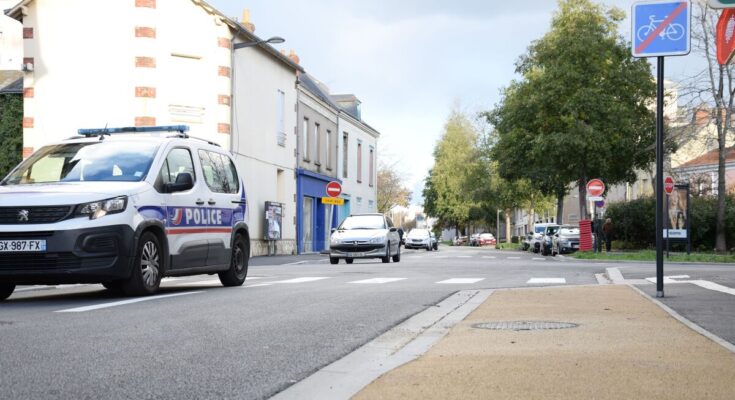Complete two-way cycle route on rue du Grand-Faubourg in Chartres (Eure-et-Loir). Since November 14, the sign allowing the circulation of bicycles in the direction of Lucé-Chartres has been removed. Bad news for the 500 cyclists who use this route every day.
“This is a deliberate choice by the city government, which wants to ensure traffic consistency on all routes dedicated to BRT buses, and therefore excludes cycling. Unfortunately, in reality, this axis is only 140 m long, so that, in order to reach the city center, users are forced to cover a distance of more than 700 m,” explains Adrien Soissons, secretary of Chartravélo, an association that promotes cycling.
Since 2013, the road has offered a two-way cycle lane and, since September 2025, prohibited directions have been applied to all users, except buses and bicycles. Enough to directly connect Place Jeanne-d’Arc to Rue du 14-Juillet. From now on, cyclists coming from this district and wanting to reach the hyper center via Place des Épars will have to descend 200 m, or via the police station and the very busy Avenue Maunoury, where a cycle lane was painted this summer.
“We are on a very busy road with cars, more than 6,000 vehicles per day, and on a bicycle edge that is only 60 cm wide, despite Cerema’s recommendations (public institutions that offer development solutions to the community, Editor’s Note) recommends a minimum of 1 m,” argues Adrien Soissons.
blind spot 12 m
According to the activist, the city’s decline is unjustified and inconsistent with mobility and safety concerns, as this would require longer routes that are more dangerous and poorly designed. For Guillaume Bonnet, deputy mayor for environmental improvement and commerce, the error stemmed from “the company responsible for installing the signs making a mistake on the signs” in September. It is true, there is no “municipal regulation that permits the use of bicycles in bus lanes in Chartres”, he stressed.
Therefore, bus-bike cohabitation would be too dangerous for this route, which is used daily by 95 buses of line B C’Pégase, the city’s high-level bus service. “Bus drivers always remind us of this very significant risk when there is cohabitation between bicycles and buses. For what? Because buses have a 12 m long blind spot. If the bus hits a bicycle, he won’t even feel it,” the elected official warned.
Risks are reduced by cyclist associations. “If we look at bus and bicycle accidents on a national scale, in 2022, only 10 fatal accidents occurred in France, and 250 people were injured,” figures Adrien Soissons. “It is something that happens, but it happens very, very rarely, compared to the recurrence of the situation of cohabitation between buses and bicycles.”
For Guillaume Bonnet, the solution lies in the pavement. On the other hand, the space will be large enough to be shared between pedestrians and two-wheeled vehicles: “We are considering, on this sidewalk, from Jeanne d’Arc beach to Rue du 14-Juillet, through markings, dividing this wide sidewalk in two, one part for pedestrians, one part for cyclists. »
To express their dissatisfaction, cyclists will demonstrate from Place Jeanne-d’Arc this Friday, November 21 at 6 pm. An unprecedented meeting in Chartres.



